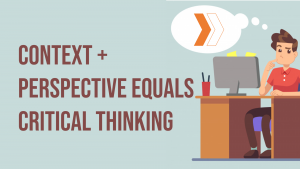Below enjoy a brief history of the second coming of Steve Jobs at Apple. I got the story as part of a board briefing pack on the relationship between the board of directors and the executive training I attended sometime in Singapore at an Executive Leadership session conducted by some exceptional professors and leaders.
The mantra, “eyes on, hands-off” must be embraced by the board to avoid surprises. It is easy for a CEO to run down a company as they continue to show a rosy picture. As Board, you must have some moment with the top directors to discuss business, especially during turbulent times to gain a clearer picture. A conversation with the chief financial officer, chief technology officer, and the chief strategy officer in addition to the chief executive officer could be in order. For transparency, you can make the appointments to meet the other chief’s through the CEO so that there are no surprises or any risks of undermining anyone. As a Board, you must dig deep and see what ails the numbers being presented and the true vibrations on the ground.
Here is the story of Steve Job’s second coming verbatim:
“Pushed out in 1985, Apple founder Steven Jobs moved on to other startups, NeXT and Pixar. NeXT never took off, but by 1997, Pixar was prospering while Apple was failing. Apple’s board leader, Edgar S. Woolard, Jr., had joined the governing board in 1996 after serving as chief executive of Dupont. A director of Citigroup, IBM, and the New York Stock Exchange, and a onetime army officer, he became a consummate member of the inner circle of the business elite, including a period as chairman of The Business Council, one of the most select assemblages of corporate leaders in the country. He treated all with dignity, putting people first, though never at the expense of sound business judgment.
In the twelve years since the Apple board had forced Jobs out, the company had recruited three CEOs. One had been an advertising manager, another a cost-cutter, and the third a process engineer. Each had presided over a string of disastrous product releases, and upon joining the board, Woolard spent hours with Apple’s senior leaders to learn the specifics of the company’s situation and what had gone wrong. As CEO of DuPont, he had always made a point of having direct contact with people throughout the organization so he would not fall victim to information filters. He took the same approach as an Apple director, talking directly with the CFO, the head of human resources, and the chief technical officer, because, he told us, “no matter how good the CEO might be, you’re getting filtered information.” His initial impression of the CEO was positive, but the CFO was privately painting a gloomy picture of Apple’s future, one that darkened in the months to come.
The company was nearly out of cash, having lost more than $800 million on the annual revenue of $9.8 billion. Informed outsiders noted that Apple had a strong brand and a small band of die-hard customers, but many doubted if it had a future. Nobody—not AT&T, nor Compaq, Dell, or IBM—seemed the least bit interested in purchasing Apple.
In the meantime, Woolard continued to dig into Apple’s operations, reviewing in depth the firm’s cash flow, product sales, and resource allocation with CFO, Fred D. Anderson, in weekly one-on-one meetings. The CFO’s candid data-drive appraisals were dire in their implications. The company had too many products attracting too few customers, a licensing strategy was diluting its brand, and it felt rudderless at the top. Woolard took the deepening crisis to a mid-June board meeting. In his estimate, if the board stayed with the same CEO, he warned his fellow directors, the probability of bankruptcy was near 90 per cent.
Despite three successive CEOs’ dismal track records to that point, Apple’s directors still believed that the right executive might save the company. How to save it—or who could save it—became the pressing question, and Woolard was flirting with a novel answer. Steve Jobs had become an advisor to Apple after its purchase of NeXT, so he had been on the scene talking to various people, including the CFO. In early May 1997, Woolard asked the board for authority to talk with Jobs about the possibility of his fully returning, telling the boards, “I think he’s our only hope,” and “I don’t see any alternatives.” At Woolard’s request, the general counsel arranged another board meeting in mid-June, and the directors then decided to fire the latest CEO and approve the rehiring of Jobs.
Jobs’ mercurial behaviour was already legendary. He had been out of the Apple game for a dozen years, and he could hardly have been more different from the lead director who was planning to recruit him. Jobs had dropped out of college, meditated in India, experimented with LSD, and clashed with virtually everyone he ever did business with. Woolard traveled the corporate byways with aplomb.
But despite their vast personal differences, Woolard, with the board’s backing, called Jobs: “We need you to come back.” Woolard appreciated the gravity of the moment. The “grace of the Lord has dropped me down in the middle of this damn thing,” he recalled, “and I’m just not going to let it go down.” Jobs refused to return as chair or CEO, saying only that he would return as an “advisor” until the board could find another CEO, but that was enough for the moment. The directors gathered in mid-July and invited Jobs, who had been sitting outside the room as the board meeting, to join them inside, and he finally accepted the calling.
Bringing Steve Jobs back was an act of leadership that Woolard and the board had fully embraced. In the months that followed, Woolard partnered with Jobs, offering guidance on a host of issues. For instance, Jobs came to Woolard for a discussion of what to do about the clones, the computers that Apple had authorized other makers to produce that were now depressing the price of Apple’s own Macs. “I’ve got to get rid of the clones,” Jobs warned Woolard. “I can’t get it going without that.” Woolard cautioned against breaking long-term contracts with the clone makers, but Jobs insisted. “I don’t care, Ed, I’ll just have to pay whatever it takes to settle. But I need to call them to say they’re out of business.” Woolard finally agreed.
Another week, Jobs sought advice on a plan to dismiss many of the company’s engineers. “Ed, I want to fire about half the engineers,” he declared in a call. “I just can’t see how we can do that,” Woolard countered, but Jobs was adamant. “I’ve been here long enough now. I know who the talented ones are real.” Jobs and Woolard soon talked again about another Jobs’s proposal—to divide the company’s remaining engineers into half a dozen teams in a way that would allow Jobs to work one full day per week directly with each of the teams. “I can’t work through a hierarchy,” Jobs explained, “I know I can make that work because I need to put my involvement in everything
that’s going on.” After an hour’s debate, Woolard finally okayed the move.
“Well, it’s very unorthodox,” he told Jobs, “but I do understand that you’re the guy with the ideas, so go ahead. If the bureaucracy is weighing you down and this is the way to get to the best people and to get them functioning [then make the changes].”
At another point, Jobs came forward with an employee profit-sharing plan that would reward staff handsomely in several years but yield them little in the current year, a plan that Woolard strongly advised against (and Jobs eventually dropped). On several occasions, they talked about hiring a vice president from Compaq—Tim Cook—who had previously worked for a dozen years at IBM.
They deliberated Cook’s salary and title, and Jobs finally hired Cook with
Woolard’s blessing in 1998 (Cook would later become Apple CEO shortly before Jobs’s death in 2011). In time, Woolard and Jobs would frequently engage around a host of other senior hires, their compensation, and their reporting relations.
Later, Woolard and Jobs talked about the possibility of creating an Apple store. “I want to build an Apple store,” Jobs declared, but Woolard initially demurred: “Compaq’s done that, others have done it, and everybody’s failed.” Jobs countered, “I’ve thought about it a lot, I think we can do a chain of Apple stores which would be unbelievable.” They argued for another half hour, and Jobs finally said, “Approve for me to do four. Give me the money to do four. If you’re right and I’m wrong, I’ll quit,” adding, “I’ll take the medicine and say I was wrong.” With Woolard’s urging, the board approved the opening of four stores. “This is going to be a retail store like you’ve never seen,” said Jobs.
In recruiting and coaching Steve Jobs, Apple directors transformed a struggling $2 billion market value company on the verge of bankruptcy in 1997 to a company with a $500 billion market value less than two decades later. Though they developed a deep knowledge of the company and worked closely with Jobs, directors resisted the temptation to micromanage. The board’s decision to hire Jobs is ranked by Fortune magazine editors as one of the “greatest business decisions of all time,” and Jobs would later say that the lead director who spearheaded it, Edgar Woolard, “was one of the best board members I’ve ever seen” and “one of the most supportive and wise people I’ve ever met” (Harnish 2012).”
Welcome back.
The above writeup makes a case for the Board Chair or any board member to step in especially during business tough times. The board must not accept poor performance and promises of good times. Most times, the CEO plays a critical role in the success or failure of a company. If the CEO is weak, it does not matter the business model, capitalization, or business potential, someone will keep missing the point, presenting more excuses than results. And will make the board itself ineffective.
Any board must understand the difference between the US and UK/ Europe corporate governance models. In the US, the roles of the Board chairperson and CEO are always fused, and this makes decision making easier and quicker. Such an approach is key especially for companies operating in a dynamic business environment. To win, such a US model requires a lot of stakeholder activism to keep the CEO/ Chairperson on their toes.
The UK/Europe approach focuses on the separation of powers between the CEO and Chairperson of the board. This assures independence but could also lead to slowed decision making. Leaders must decide on the right model based on the operating environment, nature of shareholders, and business dynamist.
Is your corporate governance model ideal or sometimes you get frustrated? How?
Copyright Mustapha B Mugisa, 2020. All rights reserved.


